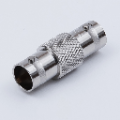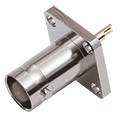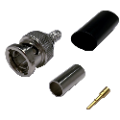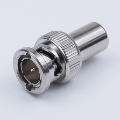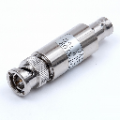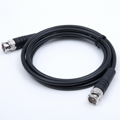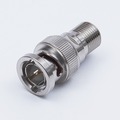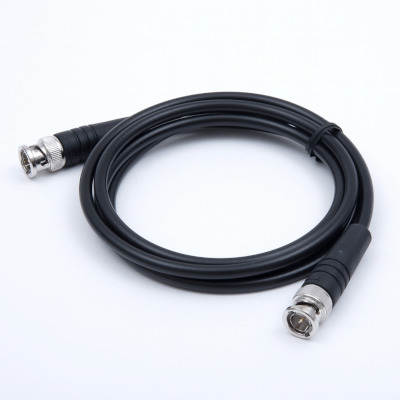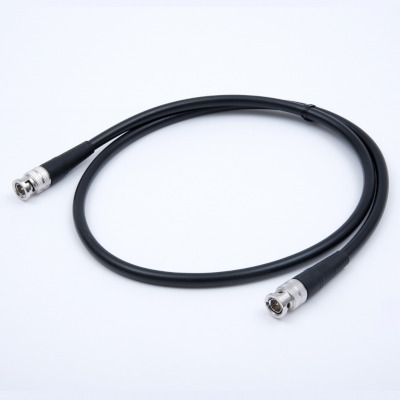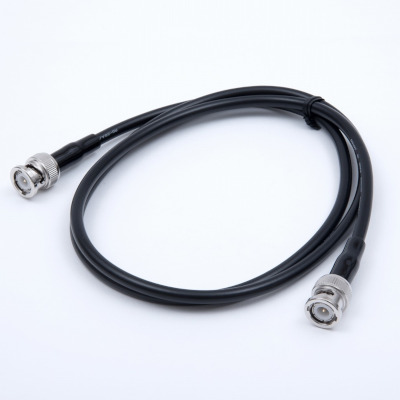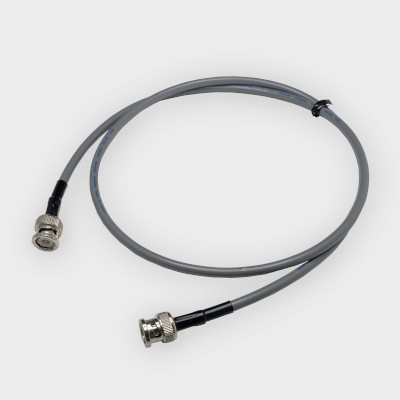BNC75Ω Type RF Connector Catalog
Please note that you only need to register as a member for the first time.
What is a BNC75Ω Type RF Connector
High-frequency BNC75Ω type rf connectors are used in broadcasting and information-related equipment. We offer various connectors compatible with recent high-definition and large-capacity image transmission standards (12G-SDI, etc.). The bayonet lock method is used for easy coupling.
BNC connectors are divided into 50Ω and 75Ω. The 50Ω rf connector is mainly for transmitting electric power in radio equipment, etc., and the 75Ω rf connector primarily sends video and audio signals to TV receivers, etc.
Some BNC50Ω,BNC50Ω type RF connectors are available for purchase from Digi-Key.
Product List
In-Stock Coaxial Cables with BNC75Ω Type RF Connectors
3C-2V Coaxial Cables with BNC 75 Ω Plugs on Both Ends
5C-FB Coaxial Cable with BNC 75 Ω Plugs on Both Ends
In-Stock Coaxial Cables with BNC50Ω Type RF Connectors
RG-58A/U Coaxial Cables with BNC Plugs on Both Ends
| Product Name | Total length |
| 10BASE2-0.5BW | 0.5 m |
| 10BASE2-1BW | 1 m |
| 10BASE2-1.5BW | 1.5 m |
| 10BASE2-2BW | 2 m |
| 10BASE2-3BW | 3 m |
| 10BASE2-5BW | 5 m |
3D-2V Coaxial Cables with BNC Plugs on Both Ends
BNC75Ω Type RF Connector Features
Coupling Method
The bayonet lock method is a coupling method that can be easily connected and disconnected and secured without resorting to threading or other means. Align the plug with the guide on the jack side, insert the plug, and turn the ring at the tip slightly to lock it in place, and the internal spring force will hold it firmly in place. It can be quickly removed by turning it slightly in the opposite direction, but since it is secured to the spring by a screw, it cannot be pulled out simply by pulling on the cable.
Trivia: The Origin of BNC
- There is a theory that Bayonet Neill Concelman comes from Bayonet and Neill Concelman (the name of the connector manufacturer), from which the name BNC was derived. However, there are several theories as to the origin of the name, including that it simply stands for BayoNet Connector, Baby-series N Connector, and British National Connector.
Impedance
BNC connectors are divided into 50Ω and 75Ω. The 50Ω type is mainly used for transmitting electric power in radio equipment, etc., while the75 Ω type is primarily used for sending video and audio signals to TV receivers, etc. When a 75Ω cable is used with a 50Ω type connector, a 75Ω transmission line can be used if the frequency is 200 MHz or lower. If the frequency exceeds 200 MHz, using BNC75Ω connectors is recommended.
High Performance
The BNC75Ω connector is compatible with 12G-SDI, the recent high-definition, high-capacity image transmission standard. 4K equivalent signals can be transmitted over long distances with a single cable, and stable performance can be obtained even in high-frequency bands.
BNC75Ω Type RF Connector Applications
Broadcasting and information-related equipment, etc.
BNC75Ω Type RF Connector Standards & Dimensions
Note: The figures provided are typical values. For further details, please contact us.
| Compatible Standards | JEITA RC-5233 |
| Impedance | 75 Ω |
| Coupling Method (Connection) | Bayonet Coupling |
| Voltage Rating | AC 500 V |
| Maximum Voltage Rating |
|
| Insulation Resistance | 5,000 mΩ min. at 500 V DC |
| Contact Resistance | Centre contact resistance 10 mΩ max. at DC1A Outer conductor continuity 2.5 mΩ max. at DC1A |
BNC75Ω Type RF Connector FAQ
Q
Can the BNC 75 Ω and 50 Ω types be coupled?
A
Yes, it can. For example, a combination of a BNC 75 Ω jack + 50 Ω BNC plug + 75 Ω cable will work. However, since it can only be used at frequencies below 200 MHz, we recommend that the impedances be matched.
Q
Is there a way to make the cable assembly more inexpensive?
A
We have connectors with a crimp-type cable attachment. Although a crimping tool is required for the assembly, it is lighter and less expensive than the clamping type connectors. You do not need to purchase crimping tools if you request us to process the cable assembly.
Q
I want to use a right angle plug/jack, but there is no compatible cable.
A
Not only BNC 75 Ω connectors, but if there is no right angle connector compatible with the cable you are using, we often offer a combination of a straight type and right angle adapter.
Q
Are there plugs that do not require soldering or crimping tools?
A
We have one-touch tightening type plugs. Soldering is time-consuming for on-site processing. Also, since crimping tools are expensive, it is rare to purchase them for small lots of connectors. The one-touch tightening type plugs are helpful to solve the hassle of on-site processing.
Q
Are there any products that can handle high voltage?
A
The rated voltage of BNC connectors is 500V, but we have MHV (rated voltage 1.6kV) and SHV (rated voltage 3.5kV) connectors with the Bayonet lock method.
Talk to our Experts

Our well experienced engineers would carefully look into your requests and respond with the finest proposal. No minimum quantity is set for the orders of customization. Please do not hesitate to contact and ask us anything.
Tel. +81-3-3939-9161
Office Hours
・EST (Eastern Standard Time): 20:00–04:00
・PST (Pacific Standard Time): 17:00–01:00
・CET (Central European Time): 02:00–10:00

